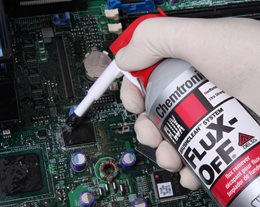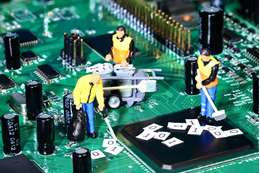Flux-Off Complete
Powerful, economical flux remover spray for cleaning no-clean flux
Flux-Off Complete Flux Remover is an extra strength solvent that removes heavy and encrusted flux residue. This unique solvent based formulation penetrates quickly to remove all types of flux, oxide particles, dust, grease and oil, then evaporates quickly leaving no residues.
Features & Benefits
- Powerful cleaner removes R, RA, RMA, and No Clean fluxes
- Extra cleaning strength
- Non-corrosive, safe for metals
- Dries fast
- Leaves no residue
- Flammable
Applications
- Removes all types of rosin-based and synthetic no-clean fluxes
- Minimizes white residue formation
- Can replace MEK in cleaning applications
| TDS | |
| REGS | |
| SDS | |
| Categories |
| Shelf Life | 5 yrs. |
|---|



